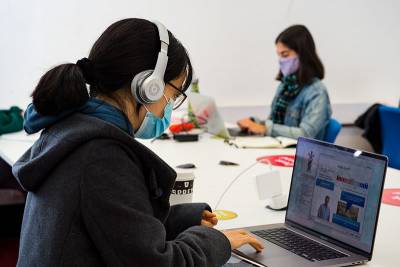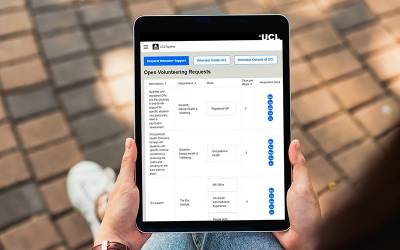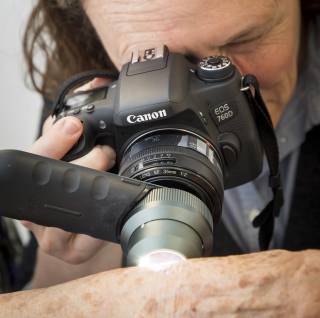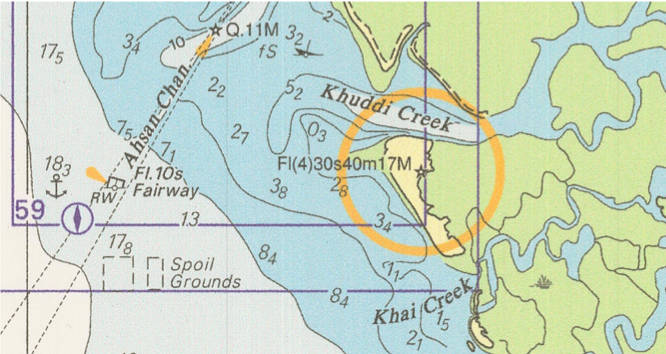Making a difference
Coronavirus pandemic response – Digital Education
Transitioning UCL to fully online teaching within a tight timeframe.
The onset of the coronavirus pandemic raised significant challenges for UCL,as it required the adoption of remote working and teaching practices across the university almost overnight. As lockdown started, ISD, led by the Digital Education and Learning & Media Applications teams, undertook rapid and extensive scoping work to assess the scale of the institution’s requirements in the coming months, especially in regard to teaching platforms.
Moodle is UCL’s virtual learning environment and acts as a central hub for all online learning, teaching, and assessment activity. The first step taken was to improve its internal infrastructure in order to double capacity for the summer term. At the time, Moodle was still hosted on premise and it became evident that a more scalable and resilient solution would be needed for the new academic year, so the next stage involved ISD teams working alongside an external partner to migrate Moodle to the cloud via AWS.
This increased capacity six-fold, which proved invaluable. Normally we see up to 1,200–1,800 concurrent users on Moodle, but in Autumn 2020, the highest use recorded on the system was 6,000 users, with daily averages of 3–4,000. Alongside Moodle, other familiar platforms for ‘on campus’ teaching were repurposed for the move online, such as UCL’s lecture capture facility, Lecturecast. Others again, like Blackboard Collaborate for live classes, had their support and training provision bolstered; and a new range of tools were evaluated and made available to support live, lab-based, and practical teaching, including Zoom, Mentimeter, and LabTutor.

DSE - the UCL App Platform
The UCL Together app
Via ISD, UCL is undergoing a programme of digital transformation. This includes making the university more technologically responsive, mainly by moving manual processes to digital solutions that are easy to use, work across multiple devices and are design focused on the user.
With this goal in mind and using Agile methodology, ISD have set up a low code platform called Digital Services Enablement (DSE), to develop web apps that could be deployed university wide. Apps are built using a reusable components strategy, to speed up development time and save teams ‘reinventing the wheel’ for each new app, as well as offering an easy and safe route to deploying regular feature updates.
Despite the platform only coming online at the start of 2020, the coronavirus pandemic provided an opportunity to test it early on. As lockdown began, ISD were asked to create a staff volunteering app, to enable departments and faculties to ask for volunteers where needed and allow staff to volunteer within UCL and the NHS.
Using DSE, the team were able to design and create an app incredibly quickly.The response time from request to the live deployment of ‘UCL Together’ was only 13 days, producing a secure working app integrated with enterprise services such as single sign-on.
The usage stats were equally impressive with over 843 days of volunteering arranged within UCL. There were 65 departmental requests, 70 UCL volunteer offers and 70 external volunteer offers.
As a result of the success of UCL Together, further apps were requested straight afterwards, including a Staff Wellbeing survey and UCL’s own Covid-19 tracking app ‘Connect to Protect’. Future projects include an External Visitors Expenses app, a Covid Testing appointment check-in app and a new Student app.

Teledermatology
Reducing NHS costs and improving patient outcomes
Over 100,000 new cases of non-melanoma and 13,500 new cases of melanoma skin cancer are diagnosed each year (NHS 2017). More than 20% of GP appointments involve dermatological conditions and many are referred to secondary care. However in a study of skin cancer referrals – only 10–12% needed referral with the remainder being benign lesions.
Our ISD Medical Photography and Health Creatives team have been working with the Royal Free Hospital and a group of GP clinics to find a better way to reduce waiting times for patients getting a diagnosis, reduce unnecessary referrals to hospital specialists and train GPs how to recognise the signs of skin cancers themselves.
Following early trials, a new method for photographing suspect skin lesions in local centres by trained medical photographers and sending high quality imagery to the specialists for further analysis is now reaping benefits for all. Following GP referral, patients are seen quickly at a centre close to where they live which helps to reduce their stress. Specialist dermatologist don’t waste their time in face to face consultations with patients who are referred unnecessarily. And specialists time is therefore freed up so that patients who need treatment are seen sooner. An additional benefit is that the imagery captured and subsequent diagnosis is also shared with GPs and used as a training tool to help them improve skin cancer recognition.

Catastrophe modelling for tsunamis in the Indian Ocean
In collaboration with the Department of Statistical Science
The teams task was to automatically extract bathymetry (depth) data from scanned maps provided by UCL’s Department of Statistical Science. This required digitised information from maps in order to develop a model to forecast the effects of tsunamis on the coasts of India, and to some extent Pakistan and Iran. To accomplish this, we needed to implement a pipeline of image processing tasks, including object detection, localisation, and digit recognition.

After we applied the object detection and character recognition pipeline on these maps, we extracted the coordinates of the bathymetry figures in the map. The extracted bathymetry data will be further used by the researchers for tsunami modelling as part of a project that seeks to better understand the entire life cycle of a tsunami, to develop better physical source models, and to carry out statistical emulation of numerical tsunami models, in order to efficiently assess the hazard, especially for India.
““The superb work of Research Software Development Group has greatly accelerated our research. By creating and employing automatic methods to digitize maps, the coverage of our model has quickly and greatly increased. It would have been impossible, or very expensive and lengthy, to do this manually. As a result we can also readily work with updated maps or in other areas of the world. The interaction with the AI Studio has been excellent, with multiple iterations. Such an inclusion of Software Engineering and AI tools into projects will become the norm in modern research endeavours.” Professor Serge Guillas
 Close
Close

